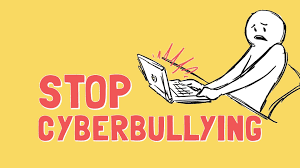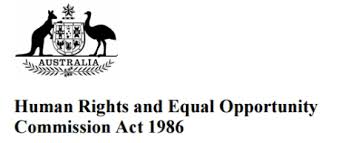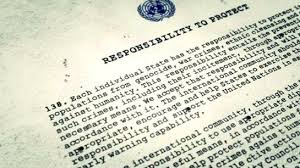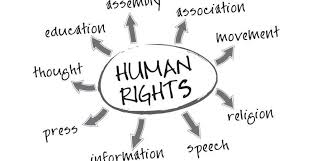
How We Can Stop Cyber bullying
How We Can Stop Cyber bullying
Order Instructions:
How Can We Stop Bullying / Cyberbullying Now?
Per the text and assigned course readings, bullying in general and bullying in particular are ongoing issues which many students today experience, often with tragic consequences. As an educator, one important job you will have is to develop safeguards against bullying in your classroom.
Imagine that you are asked to give a presentation at a conference on a K-12 public school teacher who is preparing to cover the topic of bullying and bullying in your class. To prepare for the presentation, you first have to do some research on your topic.
Write a five to seven (5-7) page paper in which you:
1. Define the terms “bullying” and “bullying”, and specify the main difference(s) between these two terms.
2. Design a lesson which addresses both bullying in general and bullying specifically, focusing on the following elements:
a. Learning objectives of the lesson
b. Measurement method(s) used to determine student learning and lesson effectiveness
c. Description of lesson type (i.e. lecture, interactive, peer learning activity, etc.)
d. Materials needed for the lesson
e. Costs and funding for the lesson
3. Use at least four (6) peer-reviewed academic resources in this assignment. Note: Wikipedia and many Websites do not qualify as academic resources. Peer-reviewed academic resources refer to articles and scholarly journals that are reviewed by a panel of experts or peers in the field. View this video for more information on obtaining peer-reviewed academic resources through your Blackboard course shell.
Your assignment must follow these formatting requirements:
• Be typed, double spaced, using Times New Roman font (size 12), with one-inch margins on all sides; citations and references must follow APA or school-specific format. Check with your professor for any additional instructions.
• Include a cover page containing the title of the assignment, the student’s name, the professor’s name, the course title, and the date. The cover page and the reference page are not included in the required assignment page length.
The specific course learning outcomes associated with this assignment are:
• Analyze how educational theories and practices impact contemporary issues in education.
• Survey and analyze issues facing the changing demographics of education.
• Evaluate the impact of technological change on contemporary issues in education.
• Use technology and information resources to research contemporary issues in education
• Write clearly and concisely about contemporary issues in education using proper writing mechanics
SAMPLE ANSWER
How We Can Stop Cyber bullying Now
Bullying as defined by psychologists is physical or verbal abuse repeated over a given duration of time and it involves power imbalance (Feinburg, 2013). Bullying occurs when a person purposely and frequently says or does upsetting or cruel things to another. There are three major categories of bullying namely: physical bullying whereby an individual uses his own body or objects to harm another individual for example, kicking, hitting or breaking somebody’s possessions are forms of physical bullying. Verbal bullying on the other hand includes ushering threats, using derogative statements, name-calling or teasing which may affect the other person mentally interfering with their self esteem (Feinburg, 2013). Social bullying entails using relationships or friends to harm someone else; this form of bullying can be presented in form of gossips and spreading rumors which make the targeted person appear foolish or brainless; this kind of bullying is commonly found amongst the girls (McNamee, 2014).
Cyberbullying on the other hand its mainly etched on the social media platform through which a person utilizes communication technologies such as the internet, social media, text messages and emails to defame, harass and repeatedly intimidate others(Feinburg, 2013). Cyberbullying can be presented through various forms such as, disseminating mean and menacing emails or short messages, posting embarrassing photographs of an individual online, like sharing nude photos of a friend via the face book platform. Cyberbullying could also entail publishing embarrassing information concerning others on the website. Other people also impersonate and use names of an individual pretending to be that person and post mean information concerning the person they are impersonating (McNamee, 2014). Some cunning individuals also trick others into posting very personal information online and then they forward it to social groups in order to embarrass them. Cyberbullying is exceedingly distressing because it affects the targeted individual in diverse ways as compared to the traditional bullying. It can follow an individual everywhere on their phones and their computers, from school to mall and even at home. A lot of people could also be involved meaning that the defamatory information leaked could be accessed even globally.
Lesson Addressing Bullying And Cyber bullying
(a)Learning objectives of the lesson
After the conclusion of this course the student will be able to . . .
- Define and explain traditional bullying in school setting.
- Distinguish the difference between traditional bullying and cyber bullying.
- Explain the three major types of bullying in the traditional bullying context
- Explore factors that could lead to cyber bullying.
- Understand the various measures that could be used to prevent traditional bullying and cyber bullying.
- Understand the various interventions that could be instituted to mitigate the occurrences of bullying in schools and on the cyber space.
- To discuss and explain the various strategies that can be used to respond to bullying incidences.
- To provide continuing professional development and family education for adults on bullying and its ramifications.
- In a position to increase awareness of internet safety strategies among youth and their families to ensure that they can minimize occurrences of bullying incidences.
(b) Measurement Methods
Student measurement methods help the teacher to establish what the students know and what they need to learn. This gap can be closed by instituting bench mark and interim tests which help to track specific skills and knowledge through progress monitoring (Sheal, 2010). For the purposes of this course formative assessments and other integral methods will be used to measure student’s knowledge and progress.
- Proper planning of the lessons and design of the learning program in relation to the established course objectives.
- Pre-course identification of the student’s needs in order to establish the knowledge acquired after course completion.
- Pre-course briefing between the student and the trainer to find out the areas that the student needs further guidance and training.
- Test before and after the training to find out the knowledge acquired through the course.
- Thorough assessment of terminal knowledge and skills and the completion of perception to ensure that the students has acquired attitude change through the training.
- Letting the student complete the end of programme reactionnaire
- Letting the student complete end of program learning questionnaire to make sure that the stipulated objectives have been met.
(c) Description Of Lesson Type
Lecture
The first lesson on the definition of bullying and the nature of cyber bullying and their distinctive traits will be delivered through an interactive lecture session. Cyber bullying is frightening; often its victims are prone to suicidal thoughts, its increased power it’s due to the extensive nature of the internet (McNamee, 2014). A lot of emphasis will be exerted on the power of the cyber space which is multifaceted and extensive since the defamatory information can be stored on variety of online media causing the victim to relieve the experience over and over again, this can be extremely traumatizing. Unlike the traditional face to face bullying this kind of can be stored on a variety of online media. The student must understand that treatment of cyber bullying must include the realization of the significant risk it creates in victims.
Interactive Question And Answer Session (Preventing Cyber Bullying)
The participants will be given a chance to offer suggestions on how cyber bullying can be prevented. And then trainer will proceed to highlight some of the cyber bullying prevention strategies.
- Assessing Bullying In The Learning Institution
In order to combat bullying and also cyber related bullying, the school management should administer surveys amongst the students, staff members and families to find out the nature of bullying experienced in the school and to what extent it has affected the schooling community. This will help the management to formulate the necessary intervention strategies and measure their progress over time (Feinburg, 2013).
- Creating An Oversight Team
The management should create a committee and charge them with the responsibility of overseeing bullying related matters. The committee should be informed about the right policies, practices and trends about cyber bullying (Feinburg, 2013). This will help in establishing protocols on how to respond to bullying incidences. This committee should also plan school wide events plan school wide events and build relationship with law enforcers so that they can be active participants in case bully cases are reported.
- Educating The Community
The schools should continuously provide continuing professional education for the families and the students on bullying and how to prevent it. Moreover, the curriculum should capture issues related to bully prevention and anti-bias education so as to address ethical standards for both online and off line communication(Robinson, 2011). Youths should be enlightened to know that any form of bullying is crime and unacceptable and they should be taught the right strategies for responding to any form of social aggression.
- Establishing Policies
Learning institutions should implement anti-bullying, non-discrimination and non harassment policies which should be clearly defined stating guidelines and the consequences for offenders. Schools should also establish technology related guidelines which must be accepted and assimilated in the learning institution (Sheal, 2010). This way they will be in position to handle any form of bullying happening in the school compound whether through the traditional methods or through the internet platform.
- Promoting Online Safety
Online safety can be enhanced through increased awareness of the internet and safety strategies. This project should include the students and the parents/guardians to make sure that they have practical information on how to cyber bullying. Moreover, the appropriate blocking and filtering soft wares should be used to make sure only necessary information can be accessed by the community (Schmalenbach, 2012). Schools should establish safe and private mechanisms for reporting any incidences of bullying. Clear procedures should be instituted to make sure that any bullying incident is investigated properly.
Materials Needed For Lesson
Laptop, projector, notes prepared on the power point platform, a note book, a board and mark pen for illustrating the complex concepts.
Costs and funding for the lessons
Face to face communication is a winning formula for imparting knowledge; in this conference some of the costs associated with the training include the conference hall, Hotel amenities, food and drinks, study materials, note books and the training fee the cohort of the students attending the conference. The funding organization will be expected to pay up to $800 to cater for the costs and funding of the lesson. {Student to append a realistic figure}
References
Feinburg, T. (2013).Cyberbullying: Intervention and Prevention Strategies. Helping Children at Home and School III (n.d.): 1-4. Nasponline.org. National Association of School Psychologists
McNamee, D.(2014).Cyberbullying ’causes Suicidal Thoughts in Kids More than Traditional Bullying. Medical News Today. MediLexicon International.
Rae, L. (2012) The Skills of Human Relations Training. Gower.
Robinson, K. R., (2011).Handbook of Training Management. Kogan Page, 1981. (Chapter Schmalenbach, M.(2012)The Death of ROI and the Rise of a New Management Paradigm’, Journal of the Institute of Training and Occupational Learning, Vol. 3, No.1, 2012.
Sheal, P. R.,(2010) How to Develop and Present Staff Training Courses, Kogan Page.
We can write this or a similar paper for you! Simply fill the order form!












